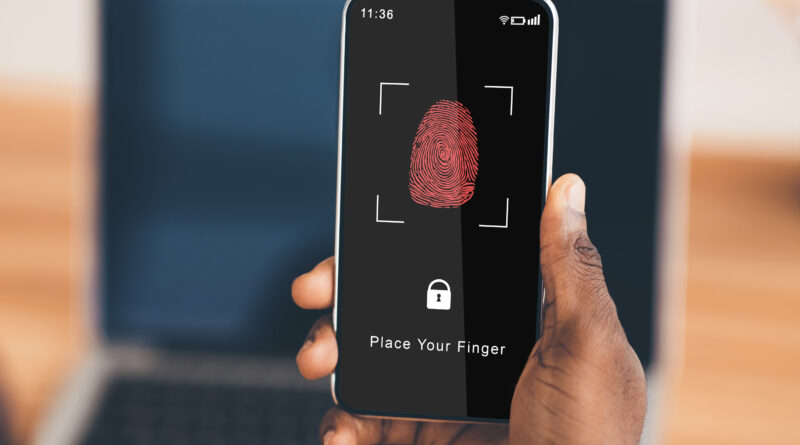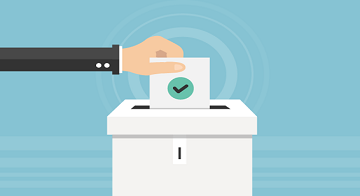Ensuring Fair and Efficient Service Delivery with Biometrics for Government
In the era of technology sophistication, is there any solution that can help government organizations administer fair and efficient government service delivery? Governments from both developing and developed countries are struggling with transparency, efficiency, and accountability to deliver public services to citizens. Corruption in different levels of the distribution process, lack of accurate identity documents, and fraudulent activity hampers smoothly run government public service facilities. In this article we are going to demonstrate how the use biometrics for citizen identification is promising to increase both efficiency and transparency for public service benefit distribution and prevent government corruption and citizen identity theft.
Why use biometrics for government service distribution?
Biometrics are automated methods of recognizing someone through their biological characteristics and traits such as fingerprints, finger vein and palm vein patterns, iris, and voice recognition. Biometric characteristics are unique for every individual, difficult to forge and because of the high individual identification accuracy that biometrics offers governments are using this technology more frequently in law enforcement agencies such as police, investigation departments, and forensic departments to solve critical identification problems. It is now proven that biometrics can provide the most accurate identification verification results and available in different forms for both governments and enterprises.
How can governments implement biometric technology?
Global spending on biometrics for government programs is predominantly driven by numerous e-passport, national identity card programs, voter registration, border control, and law enforcement identity initiatives with Automated Fingerprint Identification System (AFIS) . Utilizing a range of biometric identification technologies to protect citizen rights and control benefit distribution, here are major areas where government can use biometrics to identify people and provide more equitable distribution of governmental services:
Biometric National ID: Lack of a proper citizen identification system creates difficulties for governments to equitably plan and distribute public services and facilities. Many countries are making a national ID card mandatory for eligible citizens over traditional paper ID cards which are not safe enough to protect identity theft, forgery, duplicities, and fraudulent claims. Biometric enabled smart national identification cards can secure a citizen’s identity. Moreover, by deploying a biometric national identification card and having one central biometric identification database, the ID card can be leveraged for several different purposes to efficiently and fairly deliver government services and can help save the costs of developing and issuing different identification cards for different programs.
Biometric Voter Registration (BVR): Biometric voter registration systems are another form of identity management initiatives for governments to better understand the identities of their citizens. The primary purpose of BVR programs is to ensure fair and credible election that supports the right of people to elect free governments, a key component to support legitimate democracies. Old-fashioned voter registration systems are very problematic and suffer from many problems such as counterfeiting, forgery, duplicate registrations, ghost voting (voting with fake identity), zombie voting (voting with a dead person’s identity). A secure and accurate system of biometric voter identification can help overcome those unwanted situations. Moreover, BVR systems can help governments to identify eligible citizens to efficiently deliver government services.
ePassport: Biometric enabled ePassport distribution is another form of identity documents that governments can use to identify citizens. ePassport biometric identification systems can help governments to prevent duplicities, forgery, and fraudulent activities. Therefore, implementing a biometric ePassport program empowers governments to identify people accurately, even those citizens living abroad who may also have access to public services.
Border Control: Using a biometric identification system for border control to strengthen security is another tactic that enables countries to effectively and efficiently track both citizens and travelers. Countries who are struggling to manage refugee identity problems for benefit distribution can utilize the benefits of using biometrics for border control.
Benefits of deploying biometrics for government service distribution
All of these identification programs are critical for any country to identify its citizens to ensure their legal rights for access to government services. Enrolling citizens with their biometrics through different forms of identity documents will help government projects to more efficiently and effectively plan and distribute public services. In addition, biometric identification management technology makes governments more transparent and fair when providing benefits by preventing corruption, fraud, and identity theft. Below are major government programs that provide benefit distribution and how biometrics can help to more effectively and efficiently manage these types of distributions:
• Healthcare and Vaccination Programs: The use of biometrics for government identification programs helps to plan and distribute healthcare services to eligible people who should need access to healthcare care facilities and child vaccination programs. Biometrics in healthcare will help governments to quickly and accurately identify population growth and distribute healthcare cards, insurance coverage, and vaccinations among citizens even in rural areas to ensure the fair and equitable benefit distribution.
• Education Scholarship Fund Distribution: Education and scholarship programs are very important for any government to encourage and ensure education for all citizens. In developing countries where governments are struggling with information accuracy for planning and distributing education services and scholarship programs, biometric technology can help to easily identify eligible citizens and grant them access to these important benefits.
• Welfare Distribution: Biometric identification systems can also help governments to more equitably distribute welfare benefits to the poor. Biometrics are unique and a faster and more efficient identification mechanism to ensure the right people are receiving the right benefits. Many countries who are affected by corruption can take full advantage of this technology to more equitably distribute public services such as welfare.
• Ration Distribution: Many developing countries are struggling with efficiently distributing ration programs among eligible citizens because paper-based traditional ration cards cannot prevent corruption and fraud and can’t ensure every eligible citizens are receiving benefits. The The Indian state of Bihar discovered almost 800,000 fake ration cards that could have cost the exchequer $538,000 every month. As a whole, India suffers from ration distribution losses up to $14.5 billion due to corruption, according to Bloomberg and many more countries globally have a similar problem. Biometric identification technology adoption can help accelerate ration distribution programs to deliver benefits quickly and efficiently.
• Pensions: Pension fund distribution is far from a “smooth operation” for many countries who are facilitating these programs with lump sum or regular pension payments. Pension fraud costs the UK an estimated £52 billion every year, with tens of millions of that total accounted for by pension scheme fraud according to the National Fraud Authority, Annual Fraud Indicator report. Biometric identification systems for the government pension distribution programs will help to facilitate a smoother distribution free from fraud and corruption.
• Disaster Relief Distribution: Countries who are facing regular or periodic natural calamities or experiencing war like situations are facing difficulties to provide disaster relief distribution. The New York Times stated that the estimate of up to $2 billion in disaster relief distribution fraud and waste represents nearly 11% of the $19 billion spent by the Federal Emergency Management Agency of the USA (FEMA) on Hurricanes Katrina and Rita in 2006. Many more countries are facing similar situations. Implementing biometrics for government identification programs like national ID, voter registration, e-passport, or border control can help governments to identify and distribute benefits in a situation of war or natural calamities by eliminating identity theft and fraud risks.
The main rationale for establishing a biometric database of citizens to efficiently deliver government services among the eligible is to prevent corruption and fraud, and eliminate identity theft of citizens. Using biometrics for equitable distribution and ongoing management of government services by integrating information will have the potential to save costs and ensure goods and services reach the intended users, making public services extremely accessible.












